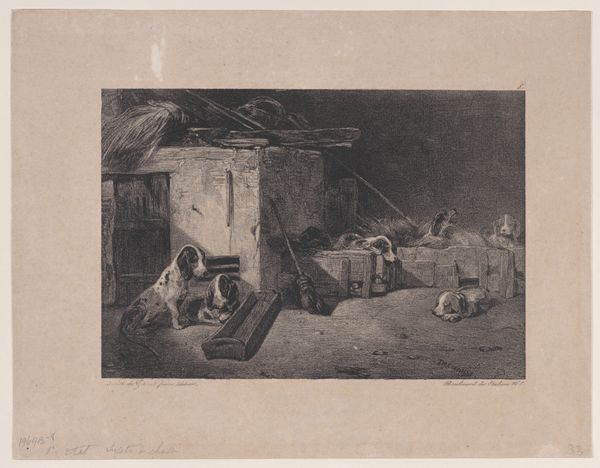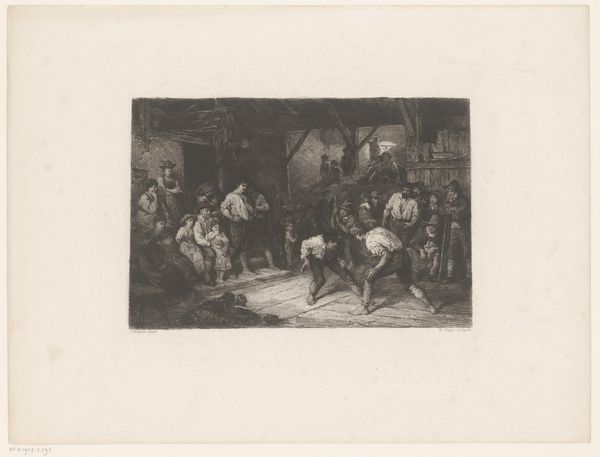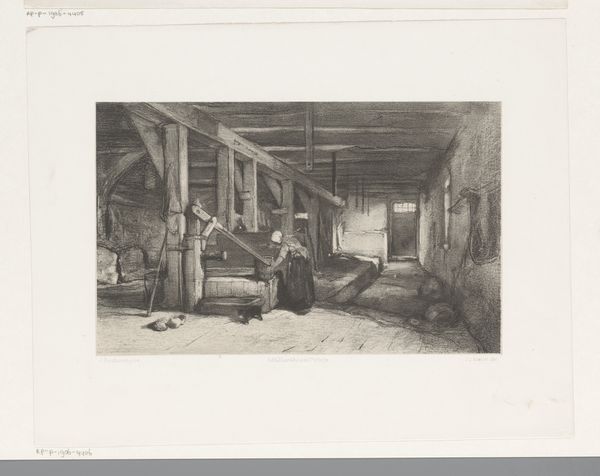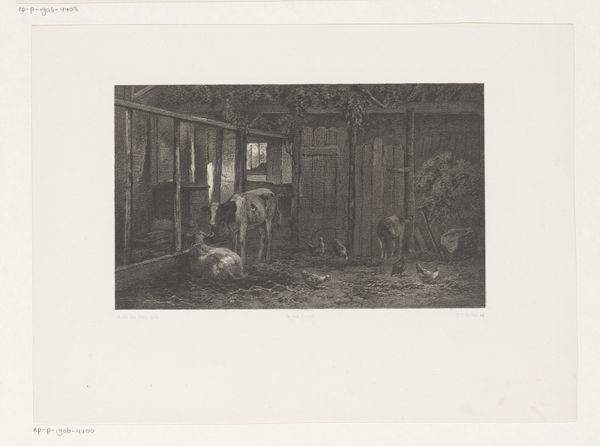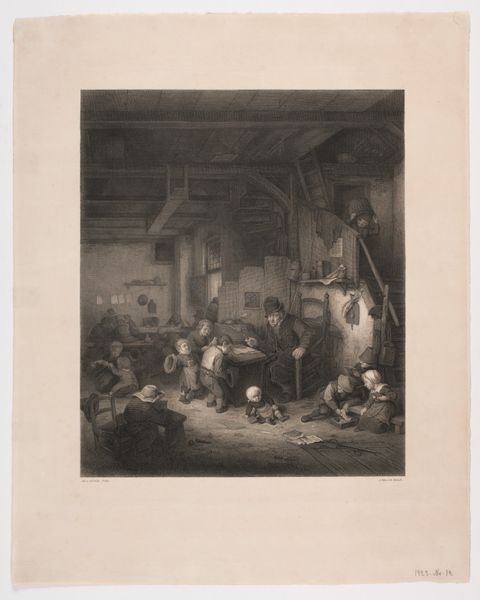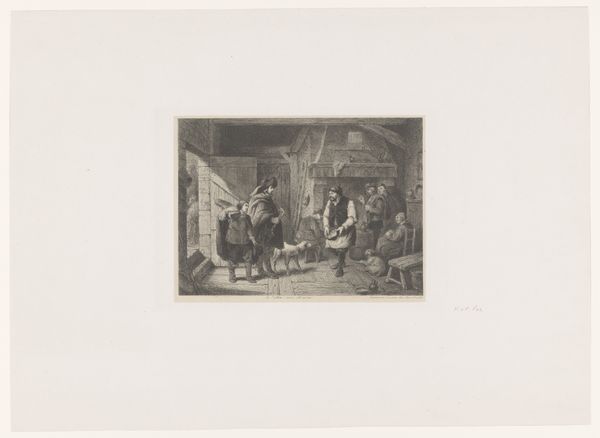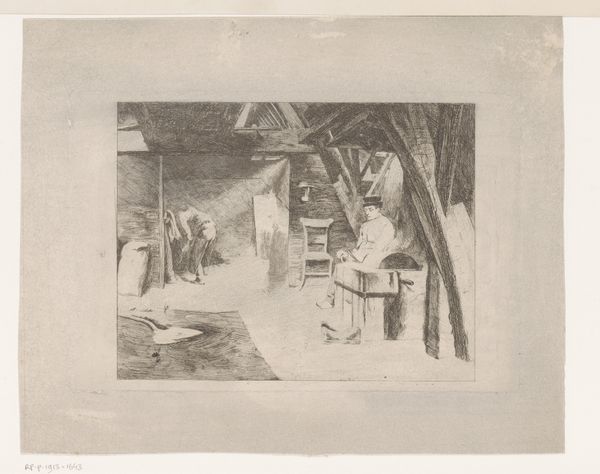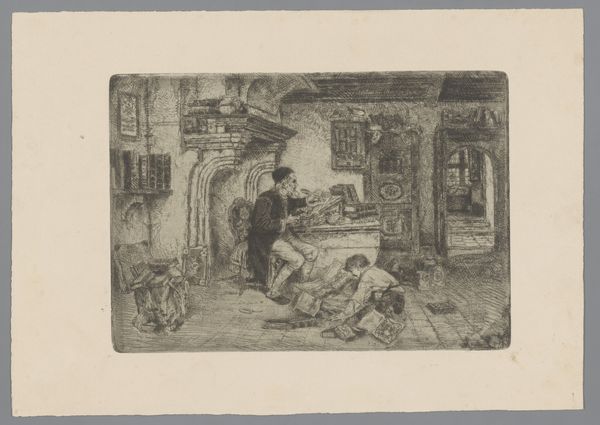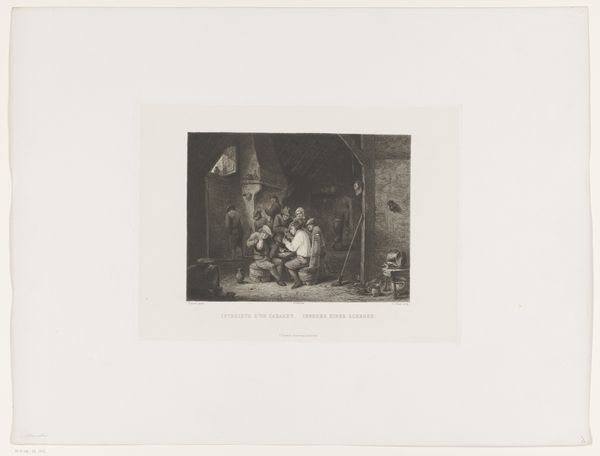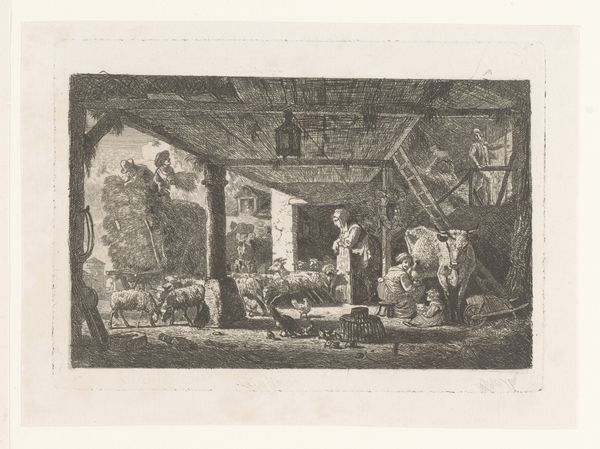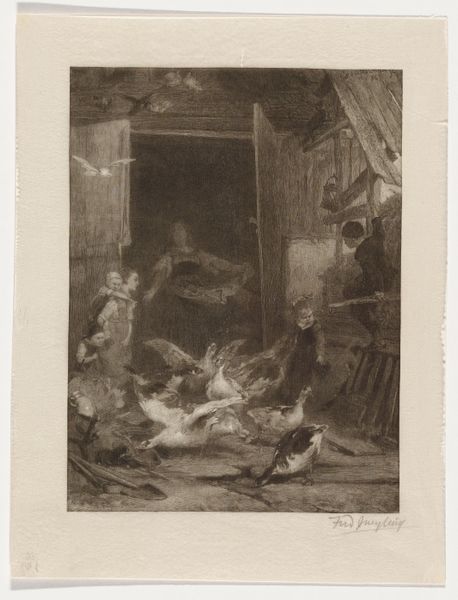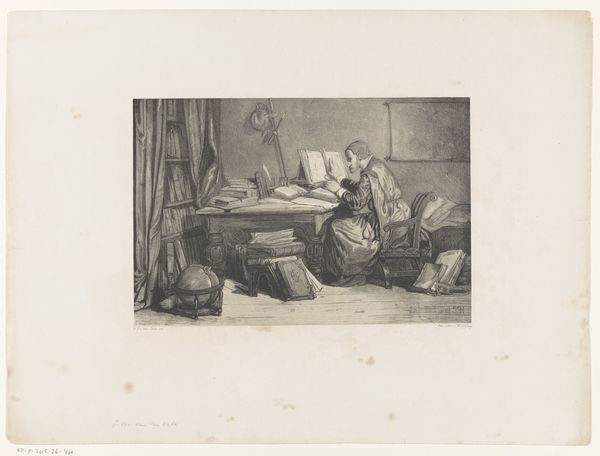
Dimensions: height 307 mm, width 401 mm
Copyright: Rijks Museum: Open Domain
Curator: Before us, we have Célestin Nanteuil's print from between 1848 and 1862, titled "Alchemist in zijn werkplaats," or "Alchemist in his Workshop". It is an intaglio print rendered in a linear, romantic style. Editor: The scene is undeniably gloomy and fascinating. The cramped space overflows with objects. The etching technique adds a texture, a visual cacophony, emphasizing the labor involved and the overwhelming nature of the alchemist’s practice. Curator: The Romanticism certainly casts this pursuit in a specific light. Alchemists, situated historically at the cusp of chemistry and mysticism, become heroic, solitary figures. Their labor is both intellectual and practical, engaged with the base materials around them. Editor: Yes, look how his world presses in on him. The setting is everything. You immediately consider who had to prepare the materials and equipment for this specific quest to take place and to yield specific desired outcomes. The alchemist's identity is inevitably intertwined with that labor and those tools. This reinforces that he isn't this genius disconnected from physical concerns. Curator: And this highlights how deeply integrated art and labor were and continue to be. Romanticism allowed artists like Nanteuil to reframe artistic creation not just as skilled handiwork, but as an almost divine transformation of material into something…elevated. It echoes the alchemist's ambition. Editor: Precisely! And what does this aspiration achieve when contextualized by the lack of diversity within these roles? The material benefits accrue predominantly to certain identities. In light of this, the artwork encourages inquiries into the systems in which art, alchemy, or even knowledge is created and sustained. Curator: Agreed. What we are left with, I think, is this complex depiction of a person utterly absorbed by a transformative process – and an invitation to consider both the tangible reality and the intangible ideal represented here. Editor: Absolutely, and to perhaps consider who has been excluded from the process or benefited from it and whether we perpetuate such conditions even today.
Comments
No comments
Be the first to comment and join the conversation on the ultimate creative platform.
